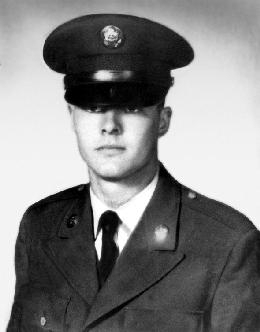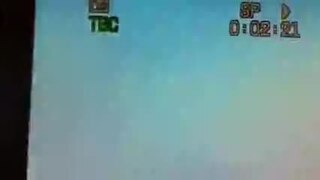
Sadr City, formerly known as Al-Thawra and Saddam City, is a suburb district of the city of Baghdad, Iraq. It was built in 1959 by Prime Minister Abdul Karim Qassim and later unofficially renamed Sadr City after Ayatollah Mohammad Mohammad Sadeq al-Sadr.
Events in the year 2004 in Iraq.

After the invasion of Iraq was completed and the regime of Saddam Hussein was toppled in May 2003, the Iraqi insurgency began. The 2003–2006 phase of the Iraqi insurgency lasted until early 2006, when it escalated from an insurgency to a civil war, which became the most violent phase of the Iraq War.
Events in the year 2005 in Iraq.

A gun truck is an armored vehicle with one or more crew-served weapons, typically based on a commercial vehicle. Gun trucks often have improvised vehicle armor, such as scrap metal, concrete, gravel, or sandbags, which is added to a heavy truck.

The 2004 Iraq spring fighting was a series of operational offensives and various major engagements during the Iraq War. It was a turning point in the war; the Spring Fighting marked the entrance of militias and religiously based militant Iraqi groups, such as the Shi'a Mahdi Army, into the arena of conflict.
The 2003 invasion of Iraq, which lasted from March 20 to May 1, 2003, resulted in a small number of U.S. and Coalition Prisoners of war.
The Karbala provincial headquarters raid was a special operation carried out on January 20, 2007, by The Asa'ib Ahl al-Haq, on the U.S. contingent of the Joint Security Station located within the Iraqi Police headquarters. The assault, which left five U.S. soldiers dead and three wounded, has been called the "boldest and most sophisticated attack in four years of warfare" and is furthermore notable for being one of the few instances when any sort of militants or insurgents have actually managed to capture U.S. soldiers since the Vietnam War.

Operation Imposing Law, also known as Operation Law and Order, Operation Fardh al-Qanoon or Baghdad Security Plan (BSP), was a joint Coalition-Iraqi security plan conducted throughout Baghdad. Under the Surge plan developed in late 2006, Baghdad was to be divided into nine zones, with Iraqi and American soldiers working side by side to clear each sector of Shiite militias and Sunni insurgents and establish Joint Security Stations so that reconstruction programs could begin in safety. The U.S. military commander in Iraq, David Petraeus, went so far as to say Iraq would be "doomed" if this plan failed. Numerous members of Congress stated the plan was a critical period for the U.S. presence in Iraq.

The May 2007 abduction of American soldiers in Iraq occurred when Iraqi insurgents attacked a military outpost in Al Taqa, Iraq, killing four U.S. Army soldiers and an Iraqi soldier before capturing Private Byron Wayne Fouty, Specialist Alex Ramon Jimenez, and Private First Class Joseph John Anzack Jr. on May 12, 2007.

William Wayne Seay was a United States Army soldier and a recipient of the United States military's highest decoration—the Medal of Honor—for his actions in the Vietnam War.

Larry Gilbert Dahl was a United States Army soldier and a recipient of the United States military's highest decoration—the Medal of Honor—for his actions in the Vietnam War.

The 2008 Iraq spring fighting was a series of clashes between the Mahdi Army and allies and the Iraqi Army supported by coalition forces, in southern Iraq and parts of Baghdad, that began with an Iraqi offensive in Basra.

The siege of Sadr City was a blockade of the Shi'a district of northeastern Baghdad carried out by US and Iraqi government forces in an attempt to destroy the main power base of the insurgent Mahdi Army in Baghdad. The siege began on 4 April 2004 – later dubbed "Black Sunday" – with an uprising against the Coalition Provisional Authority following the government banning of a newspaper published by Muqtada Al-Sadr's Sadrist Movement. The most intense periods of fighting in Sadr City occurred during the first uprising in April 2004, the second in August the same year, during the sectarian conflict that gripped Baghdad in late 2006, during the Iraq War troop surge of 2007, and during the spring fighting of 2008.
The 2008 al-Qaeda offensive in Iraq was a month-long offensive conducted by al-Qaeda in Iraq against the multinational coalition of USA, UK, Australia and Poland.

This list details terrorist incidents occurring in Iraq in 2007. In 2007, the US sent 20,000 additional troops into combat as part of a troop surge. There were 442 bombings in 2007, the second-most in a single year during the Iraq War. Major events included a January 16 attack on Mustansiriyah University, which killed 70 and injured 180, and February 3 bombings at the Sadriyah market in Baghdad, which killed 135 people.

On Easter Sunday April 11, 2004, a battle was fought at Baghdad International Airport (BIAP) in Iraq primarily between United States Army truck drivers, air defense artillerymen, armor, military policemen, engineers and miscellaneous logistics personnel and militants from Muqtada al Sadr's Mahdi Army, along the Southwest side of the airport wall in an area commonly referred to as Engineer Village. That section of Baghdad International Airport was home to numerous engineering units, in particular the 389th Combat Engineers, a dining hall, and a convoy marshaling area.












